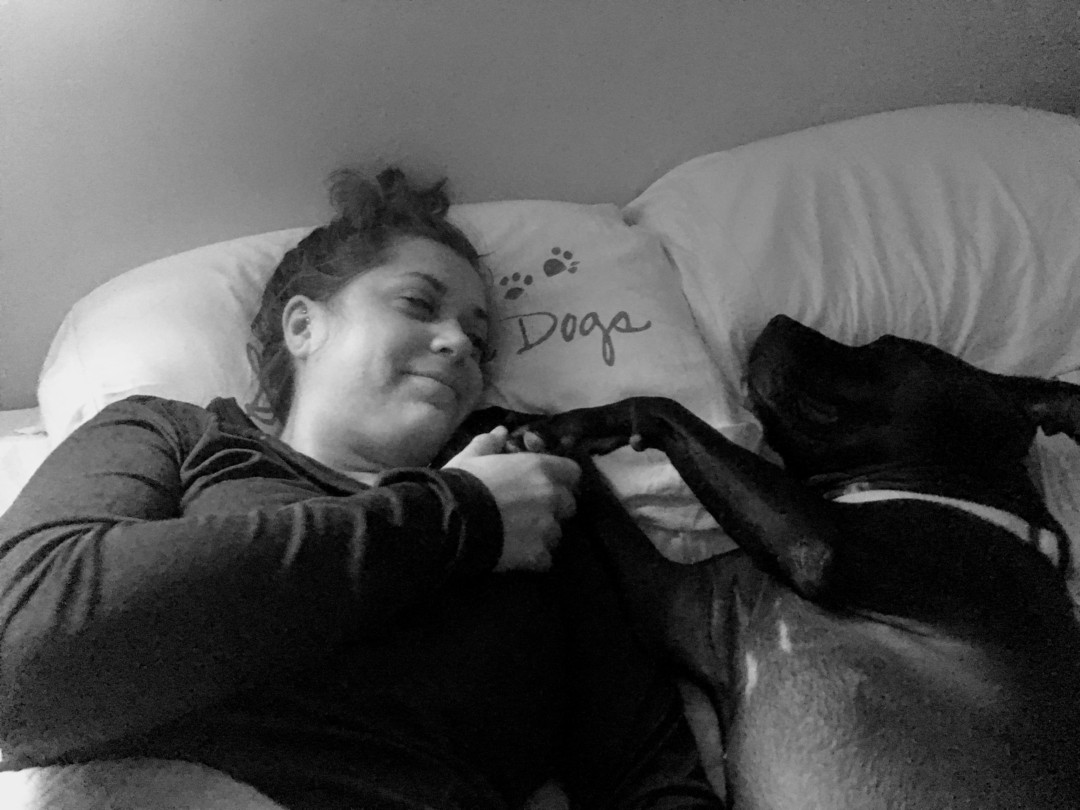After my body embraced a gluten-free, dairy-free diet in February 2017, I entered spring in the same way our New York weather does – by emerging from the dark, isolating winter into renewed life of colors and chirping birds. After two years of fighting through autoimmunity to get my health back, I finally felt like myself again. Meanwhile, my insides were slowly and silently scheming another attack, which later led to my health crash of 2018.
Spring 2017.
If you’ve read Part 1 and Part 2 of this series, you may conceptualize the gratitude I felt with my improved functioning. I woke up every day throughout 2017 with immediate awareness of my body and its abilities. The decision to add high-quality supplements to my nutrient-depleted body, while eliminating two high-inflammatory foods, brought significant improvements to my health. I had energy, focus and an ability to think clearly again. I had lost my health and got it back. What a joyful, humbling feeling that was.
As my health improved, I took a temporary part-time job helping with a local high school fundraiser. I acquired some private practice clients to keep my clinical social work skills sharp. The American Diabetes Association hired me as an on-site social worker for a summer camp for kids living with type 1 diabetes. My insurance company even agreed to cover an insulin pump and continuous glucose monitor (cgm) – devices I’d been advocating for since my type 1 diabetes diagnosis in May of 2016.
Things were looking up. Or, so I thought.
Fall 2017.
That fall, I felt well enough to start panicking about my finances and went back to work full time. “I pulled myself out of work last year to manage some health issues,” I’d tell potential employers. “And, now I’m better.”
A local hospital hired me for a full-time therapist position while I continued part-time private practice. Friends and family offered me some contract jobs editing videos, writing blog posts, and creating websites. I was back on my feet, paying off medical debts, and working my ass off again. It felt good.
Spring 2018.
I distinctly remember the moment in March 2018 when my flare-up began. I returned to help with the annual high school fundraiser again and suddenly, amidst the silent auction setup, I felt sharp pains shoot violently up my legs. Tears immediately welled in my eyes as the pain engulfed my ankles and calves. I clutched onto the gym’s bleachers, ripped off my shoes, and took deep breaths to ground myself through the pain.
That pain didn’t subside the next day, or the day after that. Instead, it signaled a cascade of new symptoms. Within a few weeks, I started to feel throbbing pains in my shoulders and tingling/numbness throughout all four limbs.
I began journaling my symptoms again. In mid-April, I visited my Primary Care Physician l and read him the list of symptoms I had prepared on my iPhone notepad. Halfway through, the doctor interrupted me, waving his hand over my phone screen. “Okay, okay, this doesn’t make any sense,” he said. He prompted me to put the phone away without finishing my list, then tapped three times on the exam table, motioning me to hop up.
After his assessment concluded everything to look “normal”, I obtained a referral for a cervical MRI. Those MRI results: “none of the findings are concerning at this time.”
By late May, I visited a medical imaging center for an Electromyography (EMG) with nerve conduction velocity (NCV). These tests measure the electrical activity of muscles and nerves. In other words, I laid on a table in a hospital gown while a doctor zapped my nerves with a metal rod to see if my limbs would react. Kind of like the game Operation. I have a rolling tally of my all-time most uncomfortable procedures. This one ranked high.
The results of my EMG/NCV: normal.
My symptoms continued to intensify. Every few weeks, I’d experience a new physical issue and, with this, my debt continued to climb. By late spring, an onset of seasonal allergies made it difficult to be outside or have the windows open. To stay afloat financially, I continued pushing myself through two jobs in the mental health field. I spent long days taking care of others while I could barely get myself dressed each morning. Literally.
Summer 2018.
By summer, heat sensitivities made it impossible to spend time outside without violently vomiting. Fatigue began to creep back through my system. I spent nights in what I call my “black-out sleep”. I typically slithered into bed by 9pm, fell immediately into black-out sleep, then my after several alerts from my 6am alarm, I’d “come to” to intense muscle pain. These mornings felt similar to being hit across the head with a baseball bat, dying, then rising from the dead to immediately become a human again.
At times, my pain felt so intense that Jason would slide me to the edge of the bed in the morning, so I could roll myself off. Eventually, I couldn’t lift my arms above my shoulders. After mustering my way through a shower, I’d point to a sweater in my closet for Jason to take down. I’d then bend over at the waist to let my arms dangle toward the ground, so he could slide the sweater over my head without having to lift my arms.
The little energy I did have went toward my emotionally-exhausting jobs. During the days, I drove around all corners of Rochester to see clients with psychotic disorders, assessed their stability, and intervened when appropriate. This often involved climbing stairwells of smokey, unsanitary apartment buildings, driving clients to appointments, going to court, visiting psychiatric inpatient units, and working with police on mental hygiene arrests. I spent evenings and Saturdays with private practice clients.
Fall 2018.
In September, I traveled to New York City, followed a few weeks later by a family trip to New Orleans. While I always love getting away, these trips marked two of the most difficult getaways I’d ever taken. I put on a happy face and smiled in pictures. But, walking anywhere came with wheezing, chest pains and difficulty breathing. I had gained 30 pounds since March, yet I couldn’t keep food down or in.
By this time, I had resumed my own research about autoimmune diseases and unexplained symptoms. I stumbled across names like Amy Meyers, MD, Dr. Steven Gundry, Dr. Mark Hyman, and Dr. Sarah Ballantyne and started trying their protocols. I also learned about functional medicine and began calling around for a doctor.
I desperately wanted a diagnosis – or, at least an explanation for my symptoms. It had been two years since I started cycling through doctors offices with near-debilitating health issues and repeated “normal” assessment results. On multiple occasions, I questioned whether I was “going crazy” or legitimately losing my mind. It was nothing short of a soul-crushing, discouraging experience.
As I write this post, I thumb through journal entries from this time. Entry after entry reads some version of the following symptoms: joint and muscle pain, joint stiffness, muscle weakness (arms & legs), tingling/numbness in hands/feet, groin pain, swollen feet (most shoes hurt), jaw pain (especially while chewing), sudden waves of anxiety, acid reflux, heartburn, mood swings, brain fog, shortness of breath, rapid weight gain, itchy skin, onset of uncontrollable acne, extreme sensitivity to temperatures, sore throat, severe seasonal allergies, gum sensitivities, stomach pain, nausea/vomiting with heat/sun exposure, fatigue.
I could go into a lot more detail about these nine months of 2018. Mostly, they felt dark – literally dark. Similar to 2016, I don’t have clear memories of many events that occurred during this time. I have some photos of my attempts to function, but I mostly see myself internally screaming through my smile. In my next post, I’ll tell you how I got out of this dark hole, and how my fight for physical health became one of the most healing and emotionally taxing years of my life.




No Comments